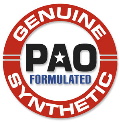
The Good, the Bad, and the Ugly
This article appeared in National Oil &
Lube News, June 2011
We live in a world where change is the norm. Some change is good, and we
simply have to adjust our own personal attitudes to adapt. On the other hand,
sometimes change can appear to come from good motivations, but when implemented
has unforeseen consequences. Sometimes those problems donít show up until
later, when the damage is done. The end result is that more changes are required
to fix the problems caused by the first change.
An example has been the reduction of the antiwear additive zinc
dialkyldithiophosphate (ZDDP) in motor oil. The intentions here were good
because zinc and phos were interfering with the job catalytic converters are
supposed to do. But letís step a little further back to get a handle on what
catalytic converters are doing on cars in the first place.
The first Air Quality Act was passed in 1967. It had no teeth, however, and
really didnít accomplish anything. Three years later a new Clean Air Act was
passed into law requiring the Environmental Protection Agency to identify and
establish pollution standards for six items deemed harmful to humans. These were
carbon monoxide, lead, ozone, nitrogen dioxide, sulfur dioxide and aerodynamic
particulate matter of a 10 micrometers or less.
Auto manufacturers werenít the only ones targeted by these efforts, but
cars and trucks were a contributing factor with regard to air pollution. The
internal combustion engine is an imperfective but effective means of powering
motorized vehicles. The downside comes from the exhaust stream which can, in
addition to other substances, spew unburned fuel (hydrocarbons) and oxides of
nitrogen (NOX) into the atmosphere. The geographic features of cities like Los
Angeles caused all these by-products of combustion to wreak serious havoc on
peoplesí lungs. As a result, later amendments to the Clean Air Act made
catalytic converters a required feature on automobiles.
The role of the catalytic converter is to convert all these harmful pollutants
into less harmful byproducts before they leave the exhaust system. Catalytic
converters transform or convert these bad things into carbon dioxide and water.
In case you ever wondered, thatís why you see water dripping out of tailpipes.
Thatís the catalytic converter doing its job.
Unfortunately, the zinc and phos in motor oil, which was there for wear
protection among other things, has been shown to have a possibility of poisoning
catalytic converters. A catalytic converter requires heat to operate properly so
that a chemical reaction can take place. If you put zinc and phosphorus through
it these elements can stick on the internals of the catalytic converter. Net
result: the chemical reaction doesnít happen and the vehicle doesnít pass
emissions tests.
Once this was understood, a decision was made to reduce zinc and phosphorus
levels in motor oil to accommodate these emission-reduction devices. The
American Petroleum Institute (API) implemented the change in late 2004 with API
SM and ILSAC GF-4 specifications for gasoline engines have maximum and minimum
phosphorus levels of 800 ppm and 600 ppm, respectively, for SAE 0W-20, SAE
5W-20, SAE 0W-30, SAE 5W-30 and SAE 10W-30. Shortly after this rollout of a
better oil for catalytic converters there followed a huge outbreak of flat
tappet camshaft failure. The cam companies saw this and people began to scratch
their heads wondering what was going on. The culprit turned out to be the motor
oil.
Flat tappet camshafts undergo extreme pressure and loads, thus requiring
engine oil that is fortified with anti-wear additives to provide premium
protection. The severity of higher valve spring pressure in racing engines also
creates the need for additional wear protection.
The problem did not show up in newer cars because they employ a roller cam
instead of the flat tappet. But street rod guys and engine builders were running
into problems theyíd not had experienced before.
First off, the cams themselves are somewhat soft. They need to be heat cycled which will season it, making the metal on it very hard and resilient to wear. It also needs to be broken in. That is each lobe on the camshaft is mated, so to speak, to a lifter. All the little imperfections on that lobe need to match all the imperfections on the lifter and that usually takes place within the first 15 to 20 minutes of that engineís run time. So when you first start it, all of this is going to take place and that break in procedure produces heat. The lobes on the cam are not pressure lubricated like the bearings in the engine would be. Theyíre splash lubricated so theyíre getting run off oil from the cam galley, getting splashed from the crank shaft when the engine is running. Because thatís all that lubricates these parts, anti-wear additives are critical in this area. This is why the oil in muscle cars and vintage cars needs beefier levels of zinc and phos.
Amsoil offers several oils with high zinc
and phos levels (ZDDP).
If you have a high performance engine that has roller lifters you will still get
better protection for the entire engine with an oil that has higher zinc and
phos levels.
Amsoil also offers a break in oil with very high levels of zinc and phos
to give you maximum protection when starting and breaking in a new
engine, it's a great way to protect your investment.
Check out this TSB to see what they offer.
Zinc & flat tappets TSB.

